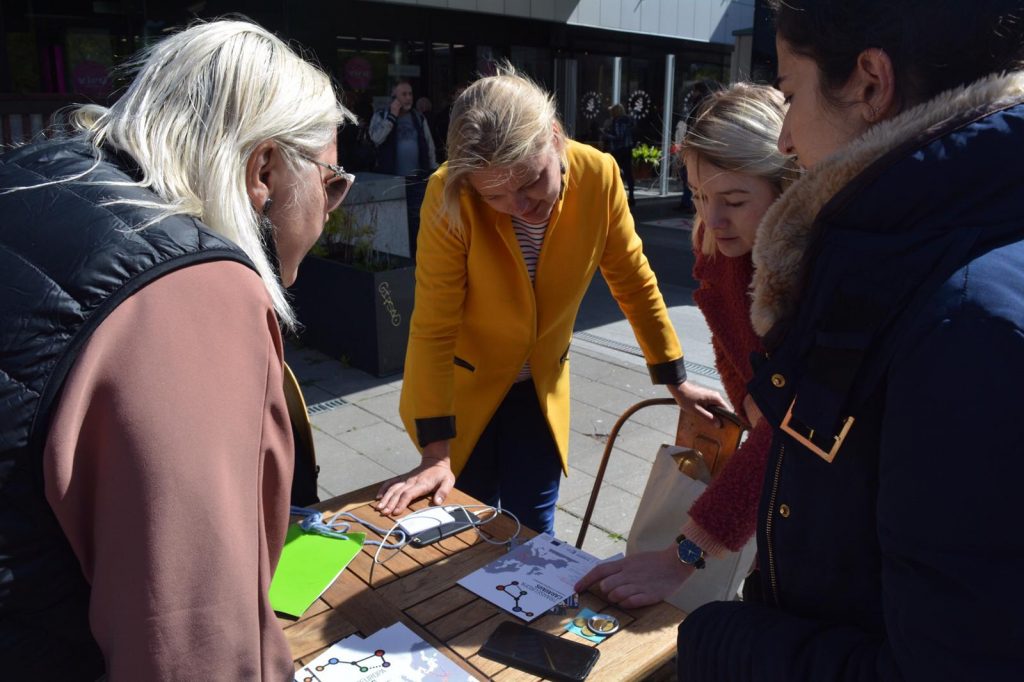An article by Tony Venables
The Transeuropa Caravans project is a drop in the ocean but along with other transnational grass roots activities in the run-up to the 2019 elections to the European Parliament, it is part of a success story. Turnout increased for the first time in 20 years up to over the symbolic threshold of 50%, 6% more than at the 2014 elections, even reaching 61.4% in Germany, the source of so much of the grassroots activity and debate about another Europe. For the first time, there was a shared sense of political urgency despite what remain 28 different national elections but which were transformed by “Europe” as the most common issue with around 15% of the total amount of the vast scattering of topics covered (see report by the European Elections Monitoring Centre). For the first time, the elections painted a picture of a Europe which is a multicoloured hybrid of national differences and European aspirations but with significant black spots and in some cases advances by the extreme right- for example the Vlaams Belang which everyone thought moribund, in my own country, Belgium.
No one can seriously claim that it was the brilliance of the official campaigns which explain the increase in turnout. Analysis of the “Spitzenkandidaten” reform should show it had little impact, since lead candidates were not put forward by all the European political formations. The picture was confused and varied. Furthermore, the election did not materialise across the continent as forecast by President Macron and others as being about an existential choice between pro-European and Euro-sceptic forces, which might indeed have increased turnout. There were also national and regional differences rather than overall European political campaigns. For example, climate change and the success of the Greens emerged as a dominant theme in the Northern/Western regions but halted at the borders of the Southern/Eastern regions where there was no dominant theme. In many countries the official campaign was launched late in traditionally nationalistic style and hardly got off the ground. So why the increased turn out? Probably the reasons for the increase in turnout should be explained by analysing trends over time going back before the 2014 elections when the decline was at least halted.
A key factor was civil society mobilisation against a background of shifts in the fortunes of political parties and the emergence of new social movements campaigning for a different Europe.
A key factor was civil society mobilisation against a background of shifts in the fortunes of political parties and the emergence of new social movements campaigning for a different Europe; a reaction to a decade of crises over the economy, the Euro, migration and European shared values. A pull factor was an apparent offer in the European Parliament to make the European elections more European by introducing transnational lists for a proportion of seats – an offer quietly ditched by conservative proponents of the status quo. This did not deter the activists who pursued the transnational course regardless, making a significant contribution to the debate on Europe. The Commission and European Parliament surfed this wave supporting projects like Transeuropa Caravans which along with many others criss-crossed Europe in the run-up to the European elections. The EU communicators realised that the campaign “This time I’m voting” would not work just by top down messages and that they needed an alliance with civil society. Against a background of new emerging political forces and a more critical mass of petitions, citizens’ initiatives, street demonstrations for Europe, the climate school strikes and a new interest in participatory decision-making, the mobilisation of civil society was on a scale not seen before any previous European election.

There has been extensive commentary on the results of the European elections and discussions with the EU Institutions and European think tanks. The transnational role of civil society and social movements has been largely ignored. Surprise, surprise! Instead, the increase in turnout has been put down to growing knowledge of Europe as a result of the decade of crises, a more hostile international climate and the lessons of Brexit (even though that has not yet come about and the UK participated in the elections).
According to the latest Eurobarometer survey, 71% of people do see themselves as European citizens and opinion polls also show that support for membership of the EU is at a record high. Even the extreme right has learned from Brexit and on the whole shifted its emphasis from withdrawal from the EU and the euro towards creating a blocking minority and dismantling the EU from within.
Such geopolitical factors may well be a motivation for some to go out and vote, but what is really needed first to increase turnout is to make the connection between peoples’ everyday lives and Europe, which is still seen as a too distant entity called “Brussels”. This connection can only be made by grassroots citizen participation, the mediation and involvement of civil society. Some lessons about how to bridge the gap between peoples’ daily life and the EU based on the Transeuropa Caravans project will be suggested in a follow-up article in the next few days.
In the meantime, it should be stressed that the EU has a debt towards civil society for the relative success of the European elections which it would do well to acknowledge and build on, not just every five years but on a more permanent basis.
The last route of Transeuropa Caravans, the Mediterranean, will start on the 20th October 2019.

